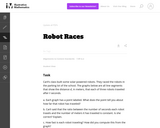
This task requires graphing time and distance.
- Subject:
- Mathematics
- Material Type:
- Activity/Lab
- Provider:
- Illustrative Mathematics
- Provider Set:
- Illustrative Mathematics
- Author:
- Illustrative Mathematics
- Date Added:
- 05/01/2012

This task requires graphing time and distance.

The purpose of this task is to engage students in Standard for Mathematical Practice 4, Model with mathematics and as such, the question as it is worded cannot be answered without making some assumptions. For example, if the items that are purchased do not have the same value, then the price reduction depends on the cost of the items.

New York City in the 1860s was a mess: crowded, disgusting, filled with garbage. You see, way back in 1860, there were no subways, just cobblestone streets. That is, until Alfred Ely Beach had the idea for a fan-powered train that would travel underground. On February 26, 1870, after fifty-eight days of drilling and painting and plastering, Beach unveiled his masterpiece—and throngs of visitors took turns swooshing down the track. The resource includes a lesson plan/book card, a design challenge, and copy of a design thinking journal that provide guidance on using the book to inspire students' curiosity for design thinking. Maker Challenge: Think about the way most people in your community travel. Invent a new way of traveling around your community that takes into account the following: helpful to the community, economical to those who use it, convenient for users. What would your new travel system look like? Sketch a new design, and then create a physical prototype of the new design to scale. Keep in mind: Where the system travels, how it is powered, why it is helpful to the community, and any features that make it special.
A document is included in the resources folder that lists the complete standards-alignment for this book activity.
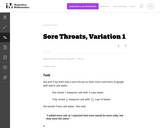
There is a non-mathematical fact that students must know about mixtures in order to answer this question. When salt is dissolved in water, the salt disperses evenly through the mixture, so any sample from the mixture that has the same volume will have the same amount of salt.
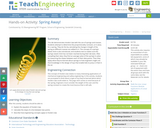
This lab demonstrates Hooke's Law with the use of springs and masses. Students attempt to determine the proportionality constant, or k-value, for a spring. They do this by calculating the change in length of the spring as different masses are added to it. The concept of a spring's elastic limit is also introduced, and the students test to makes sure the spring's elastic limit has not been reached during their lab tests. After compiling their data, they attempt to find an average value of the spring's k-value by measuring the slopes between each of their data points. Then they apply what they've learned about springs to how engineers might use that knowledge in the design of a toy that enables kids to jump 2-3 feet in the air.
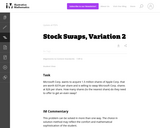
This problem can be solved in more than one way. The choice in solution method may reflect the comfort and mathematical sophistication of the student.

This is a multi-step problem since it requires more than two steps no matter how it is solved. The problem is not scaffolded for the student, but each step is straightforward and should follow from the previous with a careful reading of the problem.

Sarah E. Goode was one of the first African-American women to get a US patent. Working in her furniture store, she recognized a need for a multi-use bed and through hard work, ingenuity, and determination, invented her unique cupboard bed. She built more than a piece of furniture. She built a life far away from slavery, a life where her sweet dreams could come true. The resource includes a lesson plan/book card, a design challenge, and copy of a design thinking journal that provide guidance on using the book to inspire students' curiosity for design thinking. Maker Challenge: Your school has had an influx of new students and every class seems to be bursting at the seams! You have an additional 10 students just in your classroom alone. Because of this limited space, your school is looking for solutions. They decided that every student is going to get a new desk and chair, but it’s going to be PORTABLE. That way, you can take your desk & chair with you wherever you might go.
A document is included in the resources folder that lists the complete standards-alignment for this book activity.
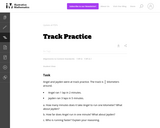
Parts (a) and (b) of the task ask students to find the unit rates that one can compute in this context. Part (b) does not specify whether the units should be laps or km, so answers can be expressed using either one.

In this lesson designed to enhance literacy skills, students examine how to use fractions to measure and help conserve freshwater resources.

Students are introduced to the nano-size length scale as they make measurements and calculate unit conversions. They measure common objects and convert their units to nanometers, giving them a simple reference frame for understanding the very small size of nanometers. Then, they compare provided length data from objects too small to measure, such as a human hair and a flea, giving them a comparative insight to the nanotechnology scale. Using familiar and common objects for comparison helps students understand more complex scientific concepts.